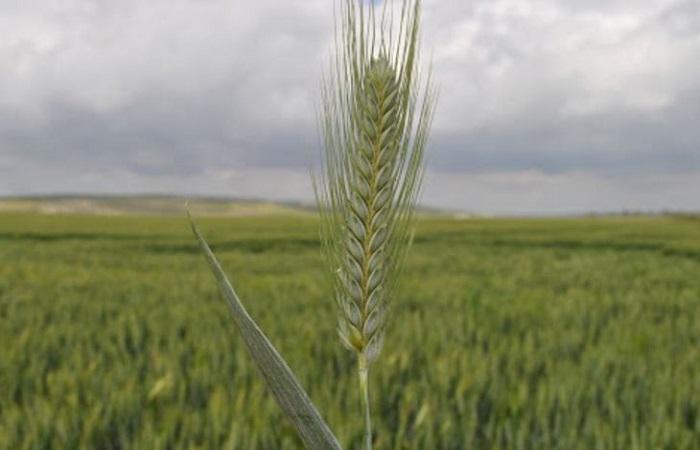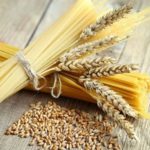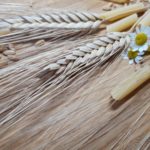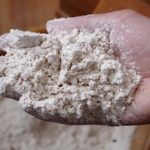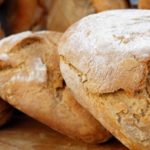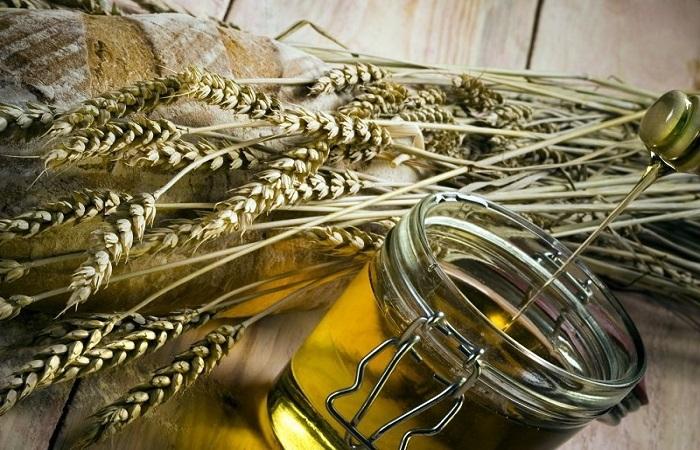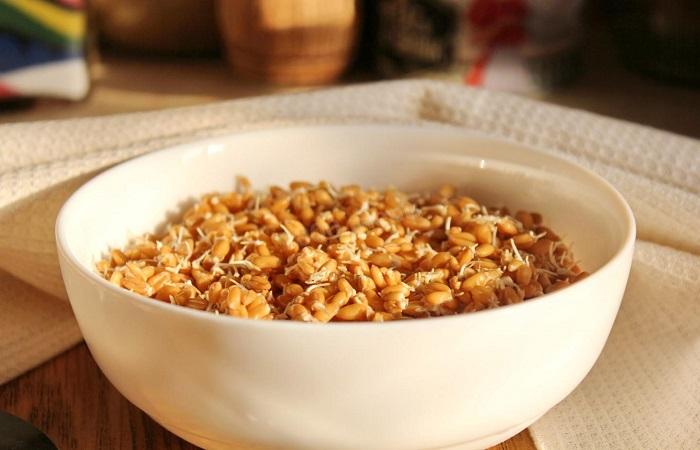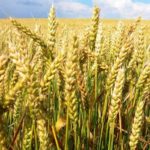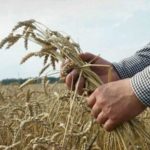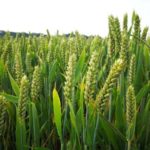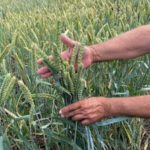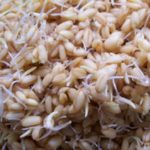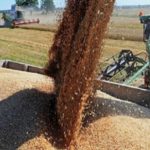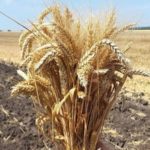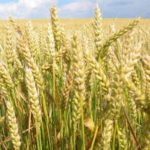Durum wheat is a type of wheat enriched with a high concentration of gluten. The culture has many subspecies and is characterized by its high prevalence and wide growing area. Products are prepared from this cereal, which some sources classify as cereals, while others classify them as pasta. Durum wheat varieties produce products such as couscous and bulgur.
What it is?
Speaking about wheat, not all consumers know that it is divided into soft and hard.At first glance, these cereal varieties are very similar to each other, so people who are not involved in the agricultural sector will not be able to distinguish them. But, knowing some of the features of durum, even a layman will be able to recognize it.
Botanical description
Triticum durum is the Latin name for durum wheat. It belongs to the annual herbaceous plants, the height can be from 30 to 150 cm. The stems are erect, hollow or completed. The vaginas are split almost to the very base; lanceolate ears may be located on their upper part.
The general inflorescence has a spike of linear, straight, ovoid or oblong shape. The root system of the plant is fibrous, the ears are quite complex in structure. On their surface, spines are located parallel to each other.
The leaves have a bright green color, their width can reach 20 cm. The fruit is a caryopsis: it is a dense, glassy grain, noticeably compressed on the sides, resembling a rib. The color of the ears varies from yellowish to brown.
Historical reference
The history of human discovery of the beneficial properties and nutritional value of a crop goes back to the distant 5-6 years BC. e. Then people plowed a less popular type of plant today - spelt. The suspected area of origin of wheat is the Mediterranean. Wheat was cultivated by the ancient Sumerians. It was also common in Ancient Babylon, Egypt, and Mesopotamia.
Over time, peoples from other parts of the world began to learn about grain crops. Thus, it began to spread across countries, and then across entire continents. Today, durum wheat is, without exaggeration, the most popular variety of cereal throughout the world.
Difference between hard and soft wheat
Between hard and soft varieties of wheat, the cereal from the first category is considered more valuable. The grain is more generously saturated with gluten, so the dough from it is elastic and does not tear. Although the composition of both varieties of grain crops is identical to each other, almost as in terms of nutritional value.
The differences between these wheat varieties are shown in more detail in the table:
| № | Comparison criterion | Soft varieties | Durum varieties |
| 1 | Features of the stem | Wheat has thin-walled straws that are hollow along their entire length. | The stems are thick-walled, regardless of the subspecies of the crop or its specific variety. |
| 2 | Grains | The consistency is glassy, mealy or semi-vitreous. Color varies from white to dark red. | They have a more rigid structure and are small in size. The color may be yellowish or brown. |
| 3 | Starch particles | They are large and soft, so when grinding soft wheat flour, it turns out crumbly and thin. It does not absorb liquid well, so products made from it are prone to rapid hardening. | Hard and small in size. Flour contains a lot of gluten, has a fine-grained structure, and easily absorbs moisture. Products made from it can not go stale for a long time, maintaining their structure and freshness. |
| 4 | Scope of application | Used in the baking and confectionery industry. | Suitable for producing pasta and raw materials related to both cereals and pasta. |
The difference in energy value between durum and soft wheat is only 1 unit. Bread wheat (soft) contains 305 kilocalories per 100 grams, hard wheat - 304 kilocalories.
Composition of durum
Durum wheat has a rich composition that contributes to its health benefits. Among the vitamins, the plant contains the highest concentrations:
- retinol;
- tocopherol;
- B vitamins;
- vitamin PP;
- ascorbic acid;
- vitamin F;
- vitamin K;
- provitamin A (beta-carotene).
Durum is also enriched with minerals:
- selenium;
- silicon;
- magnesium;
- boron;
- phosphorus;
- calcium;
- bromine;
- iron;
- potassium
Durum also contains a high concentration of fiber and vegetable proteins. It is for this reason that this type of cereal is considered more useful than bread wheat.
Classification and varieties
Durum wheat, according to the generally accepted classification, is divided into spring and winter.
- Spring wheat is characterized by faster ripening. Its growing season is approximately 85-100 days. Sowing activities are carried out approximately from the second half of April to the end of May - it all depends on the specific climatic conditions of the region. In addition, spring wheat is characterized by the presence of a powerful root system, which absorbs minerals from the soil better than winter varieties. The best subspecies of spring wheat are Daria, Kharkovskaya, Bezenchukskaya Niva, Marina, Bezenchukskaya 210.
- Winter durum wheat is characterized by a longer growing season - from 269 to 360 days. Such wheat is sown from the last months of summer until the end of autumn. The plant is demanding on soil; it does not adapt to peat, swampy, saline or podzolic soils. At the same time, winter wheat is less sensitive to changes in weather conditions than spring wheat. It is characterized by increased resistance to moisture and cold, while spring varieties tolerate drought better. The most popular varieties of winter wheat are Shulindinka, Aksinit, Amazonka, Agat Donskoy and others.
Where is it used?
The scope of application of durum wheat varieties is varied. It is used not only in the agricultural industry, but also in other areas.
In agriculture
Durum wheat is used not only in the agricultural industry as a raw material for sowing. It is also used as bird feed. It is often used in home agriculture, having undergone preliminary grinding.
In treatment
Durum wheat is not a pharmacopoeial cereal and is not used in official medicine. However, the starch obtained from it is used in the manufacture of medicines in the form of ointments, talcs, powders, and special bandages. This substance also has immunomodulatory properties, so it is added to some dietary supplements.
Wheat germ extract is sometimes prescribed as part of a complex treatment for burns. And its preventive use allows you to avoid atherosclerosis (due to cleansing of blood vessels), hypertension (thanks to strengthening the vascular wall with a parallel increase in its elasticity), and malignant neoplasms.
In cooking
The most common area of use of durum wheat is the food industry. The high gluten content in flour from grains of this type makes it possible to obtain dough suitable for making:
- pasta;
- semolina;
- coarse flour;
- dumpling dough;
- waffle cups;
- pizza bases;
- bulgur;
- couscous.
Durum wheat flour is also used as breading. It is sprinkled on meat or fish semi-finished products.
Where does it grow?
Wheat ranks first in sowing and harvesting in Russia. Winter crops are grown in areas where the air temperature in the cold season reaches at least -20 °C. The plant prefers chernozem or chestnut soils, so the best options for it are the following areas:
- Volga region;
- North Caucasus;
- Central Black Earth economic region.
Spring durum wheat is grown mainly in the steppes and forest-steppes to the west or east of the Volga, as well as in the south of forest zones.
Features of cultivation
The technology for growing durum is similar to that used for cultivating bread wheat. However, hard varieties are more demanding on the composition of the soil, as well as on mineral fertilizers used for fertilizing. The crop is sensitive to predecessors, so it should not be grown in one place for more than 2 years in a row.
The above factors increase the cost of growing durum wheat varieties by 15-20%. But, when a high harvest is obtained, production costs are fully covered by even higher purchase prices.
Harvest and storage
Durum is very picky about harvest times. Even a week's delay can lead to loss of grain quality. And this will complicate the subsequent sale of raw materials to companies involved in the production of cereals or pasta. The harvest period falls in autumn, but it all depends on the type of agricultural crop.
Durum wheat is a valuable raw material that is used in several industries. The sowing time, growing season and harvest time directly depend on its variety. In Russia, the crop occupies a leading place in terms of cultivation volumes. However, in other countries of the world it is one of the most popular cereal crops.




